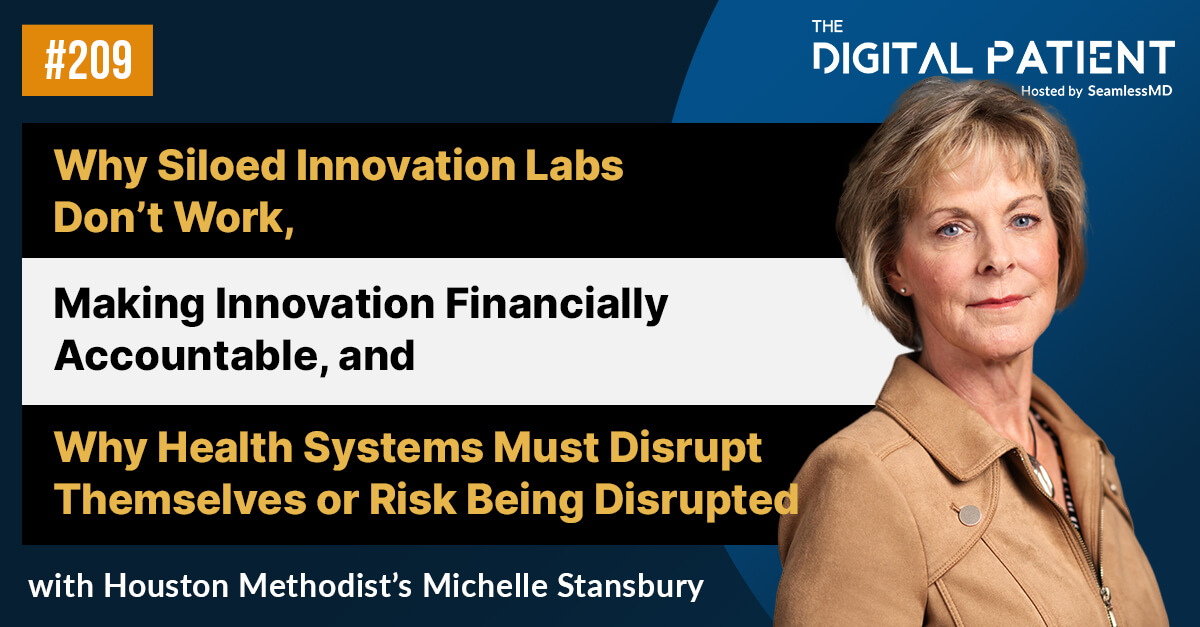Mobile health (mHealth) technology has led to disruptive innovations in healthcare. Since its establishment approximately seven years ago, the University Health Network’s (UHN) Centre for Innovation in Complex Care (CICC) has become an innovative research institution aimed at engaging patients and providers to develop solutions to our current problems in healthcare practice.Recently, we had the chance to see how Dr. Howard Abrams, the previous Division Head of General Internal Medicine at UHN and Mount Sinai Hospital in Toronto and currently Director of the CICC, views the opportunities and challenges that have arisen as a result of the emergence of mHealth.

What inspired you to establish the CICC? What key milestones has CICC accomplished?There was an integration problem across time and space with patients who have multiple comorbidities across multiple providers. I had been thinking about this for some time but there was never quite the right opportunity and partners to do it with. In 2005, I became the Division Head of General Internal Medicine at UHN and Mount Sinai Hospital and had the opportunity to recruit some people who I like to say were younger and smarter than me. We together established the concept of the Centre for Innovation in Complex Care.Since then, we have launched many tools including Clinical Messenger, an interprofessional communications tool that triages messages between the inter professional care team by urgency, allowing team members to respond in the appropriate time frame given all their other duties.You’ve had great success bringing ideas like Clinical Messenger into the hospital. What do you think is the best strategy for implementation of a health technology product into the system?If you really want to make a difference, you have to implement the product and prove its value. Once you have established a clear return on investment, you have to have a way to inseminate that innovation. That’s the best way to achieve global system change. In this sector, it’s very common to run into NIH: the “not invented here” problem that prevents innovations from entering a specific market. Thus, it is so important to establish a presence locally, develop metrics and then launch globally.We’ve seen mobile health rise exponentially in the healthcare field over the last decade. Do you think mobile health is important?When it first came out, I thought it was gimmicky. But as people become more geared towards prevention, it may become extremely valuable in the future. The challenge with mHealth in particular is that most of these applications were aimed at the consumer market, not institutions. Now, there are several U.S. and Canadian institutions that are starting to look into health tech. Another challenge here is that while there is certainly some evidence in literature that mHealth technologies can produce better health outcomes, there are not enough case studies to show success metrics in a more formal ROI.How can entrepreneurs and healthcare organizations work together to build case studies that would demonstrate the ROI for mobile health technologies?For "single purpose" apps, it is fairly easy to do before and after studies. For more complex interventions, where the real cost savings for health systems lie, it is much more difficult. I think case studies may not be enough. They can provide the "story", but you still need the data. I'm not sure we can wait for the results of randomized trials, as the mHealth world moves way too fast. What is current today, has been modified and upgraded in the next 3 months, whereas randomized trials work in a time frame of years. This is a real dilemma and I don't know that we have a good answer.What advice do you have for young entrepreneurs who are entering the health IT field now?Whatever you’re doing, make sure you engage patients. Really try to understand what their needs are. Do not try to test your product on healthcare practitioners who are patients as well. They do not need it. Find non-expert patients who truly need access to the information you are providing. Innovation must be patient-centered and provider enhanced. In addition, I think every health care intervention whether it is mHealth, health technology, or anything else needs to use Design Thinking methodology. Design Thinking is a methodology of engaging users (patients, clients, customers) in the design process at a very deep level of meaning. It then uses that insight to rapidly and inexpensively prototype solutions that can be presented to the user for immediate feedback and re-design until the desired outcome is achieved.Are you a thought leader in digital health or do you know someone who is? Give me a shout at yashvi@seamless.md - I would love to chat!This post was written by Yashvi Shah, Marketing Associate at SeamlessMD.The Seamless TeamSeamlessMD transforms paper-based instructions into an interactive, personal navigator for patients on smart phones, tablets and the web to improve outcomes and lower costs.https://www.seamless.md
.svg)









.png)
